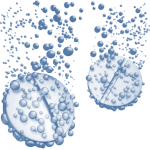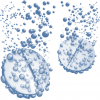Formulation and Evaluation of Microemulsion Based Itraconazole Gel
Gangotri Yadav, Omkar Tambvekar, Pallavi Ware, Ashish Jain
Abstract:
The microemulsion is one of the most promising sub-micron carriers for topical drug administration because it has benefits including high drug-loading capacity and good skin penetration. Topical fungal infections may be effectively treated with Itraconazole (a broad- spectrum antifungal drug) gel produced from microemulsions. The objective of the research is to formulate and evaluate a Microemulgel system loaded with the drug Itraconazole microemulsion for effective treatment of skin infections. Optimized microemulsion batches were selected through a pseudo-ternary phase diagram (using IPM, tween 80, and PEG 400 as oil, surfactant, and co-surfactant, respectively), followed by stability studies and characterization. As a gelling agent, xanthan gum is used. The characteristics and stability of an itraconazole microemulsion-based gel were studied, and in vitro drug diffusion of the optimized MEG was conducted. Isopropyl myristate was used as the oil, tween 80 as the surfactant, and PEG 400 as the co- surfactant to produce the microemulsion. With a Smix ratio of 3:1, the largest clear microemulsion zone was identified. The drug content, Viscosity, and zone of inhibition were found to be in the desired range. It was found that the droplet size of optimized formulations was within the desired range (<200nm). The prepared microemulgel was discovered to have good spreadability and texture (from selected microemulsion batches). And it was found that the optimized MEG 3 had a 94.12% in vitro drug diffusion rate. When compared to the microemulsion (ME2) and the conventional gel, the drug from MEG3 Gel showed far better in vitro antifungal studies. Similar to this, it was discovered that MEG 3 Gel’s zone of inhibition (against Candida albicans) had a larger diameter than the microemulsion batch (ME 2). Moreover. Furthermore, according to the stability investigations, the formulation was stable across a range of temperatures. Itraconazole-loaded microemulsion-based gel could be used effectively for the treatment of topical fungal infections.
Keywords: Microemulsion, Pseudo Ternary Phase Diagram, Candida Albicans, Cosurfactant, Microemulgel, Smix.



